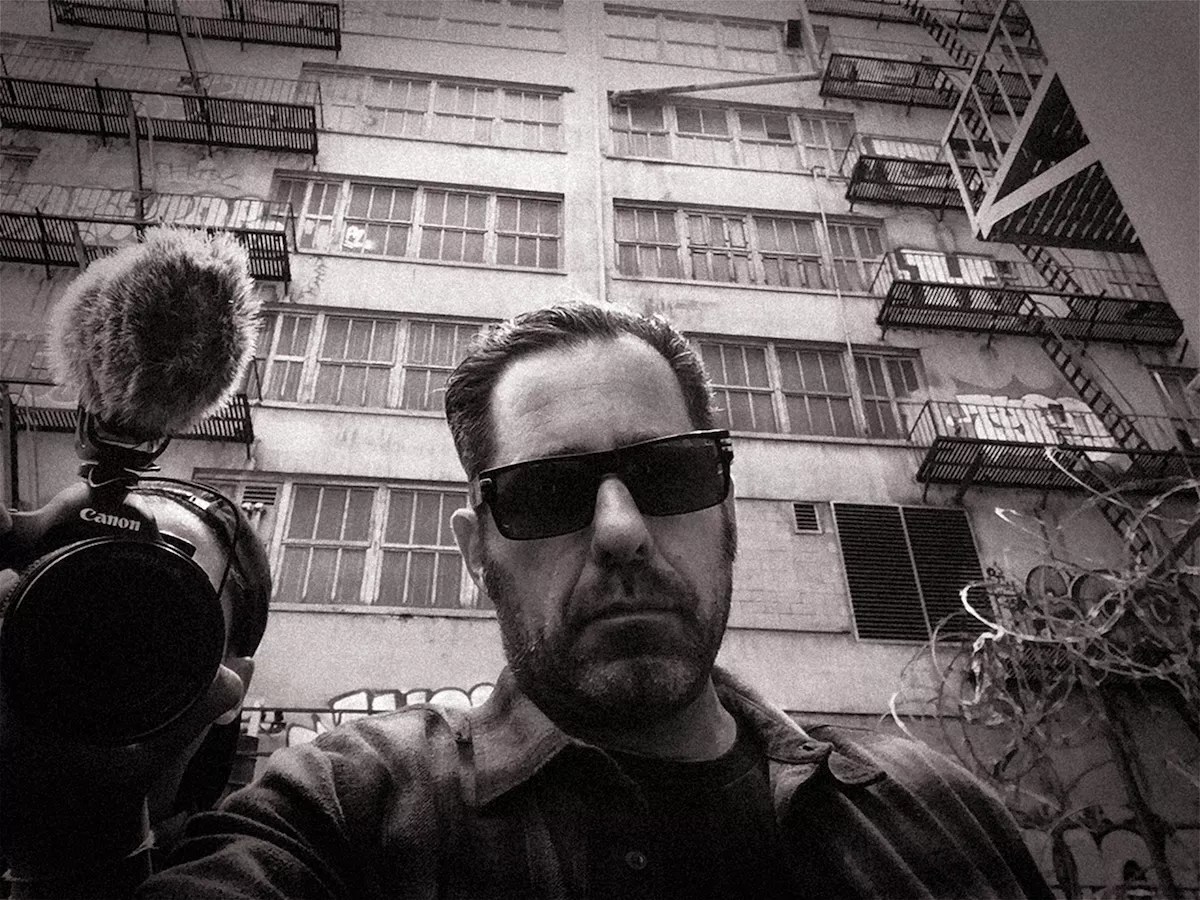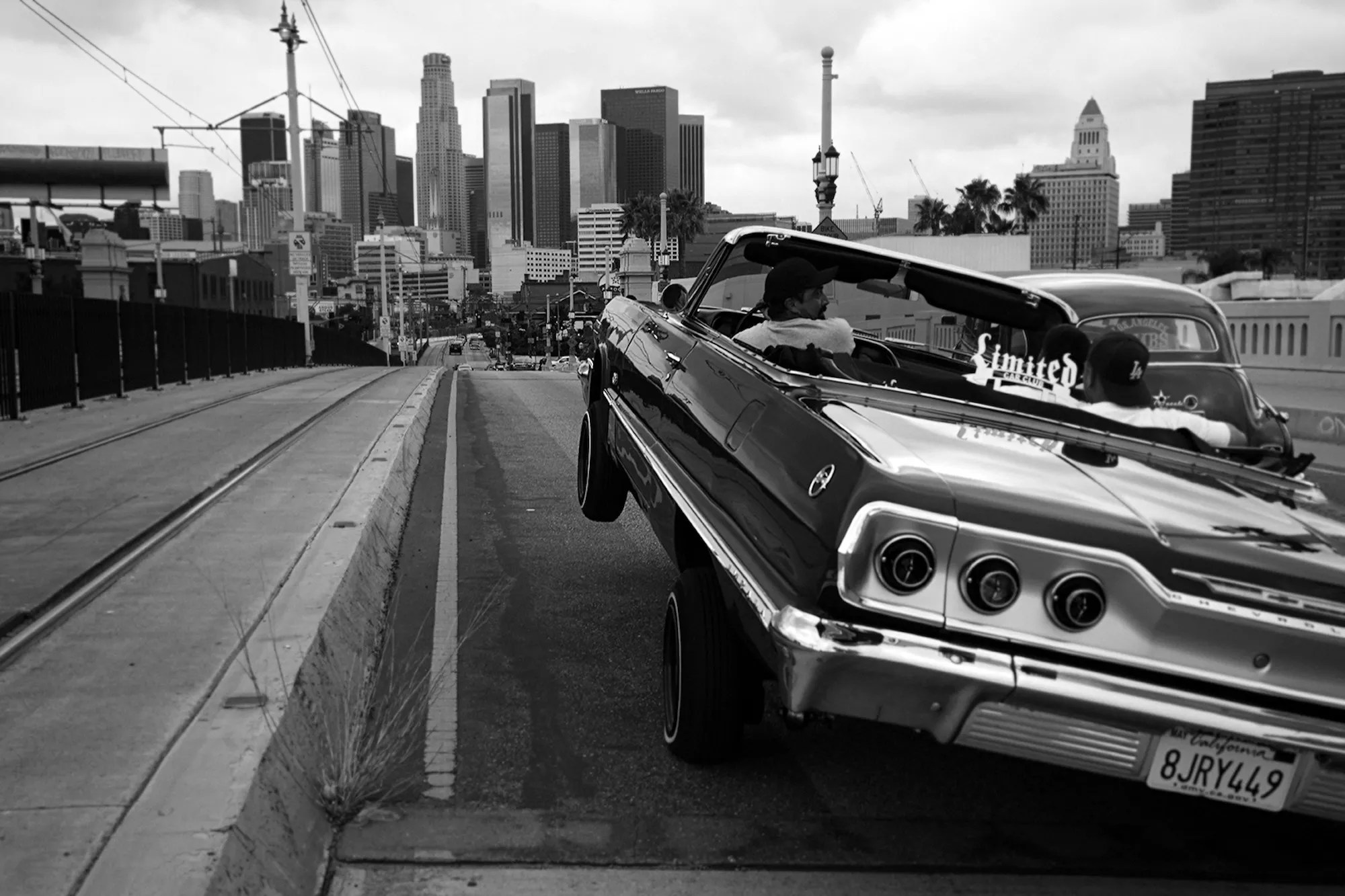
Photo by Mike Miller

Audio By Carbonatix
For decades, Mike Miller has snapped photos of your favorite rappers, from N.W.A., 2Pac, and Snoop Dogg to newer era artists such as YG, A$AP Rocky, and Vince Staples. The veteran photographer has also collaborated with heavy metal band Pantera and helped with campaigns by shoe company Vans and streetwear brand Stüssy.
Now, his contributions to hip-hop will be highlighted in the “N.W.A. Outtakes” unveiling at the Art of Hip Hop in Wynwood on Friday, April 26.
“I was a big fan of hip-hop early on, and I used to listen to hip-hop, obviously,” Miller tells New Times. “I used to bump it in my car, and my agent heard it one time. She goes, ‘Oh, you like hip-hop? I’m gonna go after some of the record labels and let them know that you’re a fan.’ That’s kind of how it all started and how hip-hop became a big part of my archives.”
Having gotten up close and personal with figures like Eazy-E and Dr. Dre, Miller has some insight into these larger-than-life icons.
Miami, make your New Year’s Resolution Count!
We’re $14,000 away from reaching our $30,000 year-end fundraising goal. Your support could be what pushes us over the top. If our work has kept you informed, helped you understand a complex issue, or better connected you to your community, please consider making a contribution today.
“Dre was more focused on making his music, so I didn’t connect with him as much as Eazy or Ice Cube,” he notes. “Cube hired me for “West Side Connection,” and I photographed him early on for Spin in ’89.
“Eazy was just like – I was shocked at how cool he was, and I was comfortable around him,” Miller continues. “When I first met him, it was for the Source magazine, and I went to his studio in Lamar Park in Inglewood, and it’s a pretty unknown studio for most people. But all his plaques were on the wall, and there was like a thick shag carpet. I remember he showed me around ’cause nobody was there yet, and he played me 100 Miles and Runnin’.”

Photographer Mike Miller will make an appearance at the Art of Hip Hop on Friday, April 26.
Photo by Mike Miller
One of Miller’s most iconic photos of Eazy-E sees the rapper holding up a cruiser board. Though skate culture and hip-hop are intertwined today, they were two separate scenes back then.
“Back in the day, skating and hip-hop didn’t mix. But if you talk to Snoop about it, he’ll be like, ‘Oh, I used to do those flip kicks on the jump-off curve.’ We were all like ’70s kids, and we were all influenced by skateboarding early on. So when I was shooting the second time for Eazy for the Source magazine, he saw me skate, and he popped his trunk and goes, ‘Check out my deck.’ That deck happened to be by one of my close friends, Natas Kaupas. I said, ‘Oh, let’s take a couple of snaps of it.'”
Still, Miller didn’t realize he was helping make and document music history back then.
“I was there to work,” he says. “I’m a pretty focused person, and when it comes down to business, I know there’s a lot on my plate. The record labels expect a lot, and the artists don’t have much time. So when you have the opportunity to photograph artists for an album cover, you want to get as much out of it.”
Still, Miller says as hip-hop emerged in the ’80s and transitioned into a lucrative genre in the ’90s, record labels were unprepared to deal with rap artists personally and creatively.
“The record labels never sent in an art director,” Miller notes. “With the 2Pac shoot, someone came from New York because he was at the height of his career. Hip-hop was making all the money for the record labels, but they didn’t know how to deal with them.”
With labels dropping the ball during hip-hop’s ascent into the mainstream, Miller was forced to become a multifaceted photographer.
“For Coolio’s first cover through the barbed wire, I was at my dad’s scrap yard. There was no art director there. I just put him up on a ladder shot through the barbed wire, and that was his first cover – and that happened a lot. It was just me and then my crew. It’s kind of crazy just to think of something right at the moment. But I’m really good at being dropped anywhere and then finding places to shoot – I do that all the time.”

Mike Miller didn’t know he was documenting hip-hop history when he first started photographing.
Photo by Mike Miller
Miller’s expert eye eventually got the attention of one of hip-hop’s luminaries, 2Pac.
“I first met Pac at a Los Angeles club called Water the Bush through a friend who was the manager of Digital Underground. Then, my other buddy, Fabian Duvernay, became the A&R over at Interscope. Pac told Fabian that he liked my Stüssy campaign that I did early on, and he said he wanted to work with me.
“When the Thug Life album cover came about, he wanted me to shoot it. I first met him at his condo right by this place called Runyon Park in the Hollywood Hills. I showed him some Polaroids and talked about the upcoming shoot, and he dug it. He was 2Pac, you know? He was a lot of fun to be around.”
But even in the ’90s, nobody could have predicted how far hip-hop’s reach would go, spilling beyond music and influencing art, fashion, and pop culture in general.
“I go to Paris and do a gallery show, and I’ll see some dude with a Pendleton buttoned up with a bandanna, and I’m like, ‘Yo! What up, holmes? Where are you from? ‘And he’d be Iike, ‘I live Paris.’ I’d be like, ‘Oh shit, that’s exactly what N.W.A. did,'” he remembers.
Though Miller’s work from the ’90s often gets the most praise and attention, the photographer continues to work with today’s most prolific rappers. Recently, he shot Compton rapper YG for the cover of his debut album, My Krazy Life.
“YG hired me to do the album cover and film a documentary for him, so I was with him for like six months,” he says. “I was the art director on that project, so I laid it all out. I designed the whole package and shot the cover.”
Miller will have plenty more stories to tell when he stops at the Art of Hip Hop on Friday. In addition to unveiling outtakes of his work with N.W.A., he’ll talk with museum cofounder Alan Ket and sign posters.
Mike Miller at the Art of Hip Hop. 6:30 to 9:30 p.m. Friday, April 26, at the Art of Hip Hop, 299 NW 25th St., Miami; 786-772-1604; artofhiphop.com. Admission is free with RSVP via eventbrite.com.